
Although the coronavirus helped humanity to reduce harmful emissions into the atmosphere in the first half of 2020 by a record 9%, it is too early for ecologists to celebrate victory, because, as plumbers say, “the whole system needs to be changed here” - a carbon economy system based on the total consumption of fossil fuels. And if we have decided on new sources (sun and wind), then we do not yet have a carrier of their unstable energy. Hydrogen claims this role. This time we will talk about its prospects, as well as the prediction of Jules Verne, Elon Musk's nightmare, the world's largest green hydrogen plant in Fukushima and our chances to travel to our dacha on hydrogen trains (chances are great).
Toshiba's Fukushima Hydrogen Energy Research Field in Fukushima Prefecture is the world's largest pilot plant for the production of hydrogen by electrolysis. The work was carried out within the framework of the project "Hydrogen social construction technical development project / Hydrogen energy system technical development / Technical development concerning business model construction and the large-scale actual proof of a re-energy use hydrogen system" of the Japanese Organization for the Development of New Energy and Industrial Technology (NEDO).
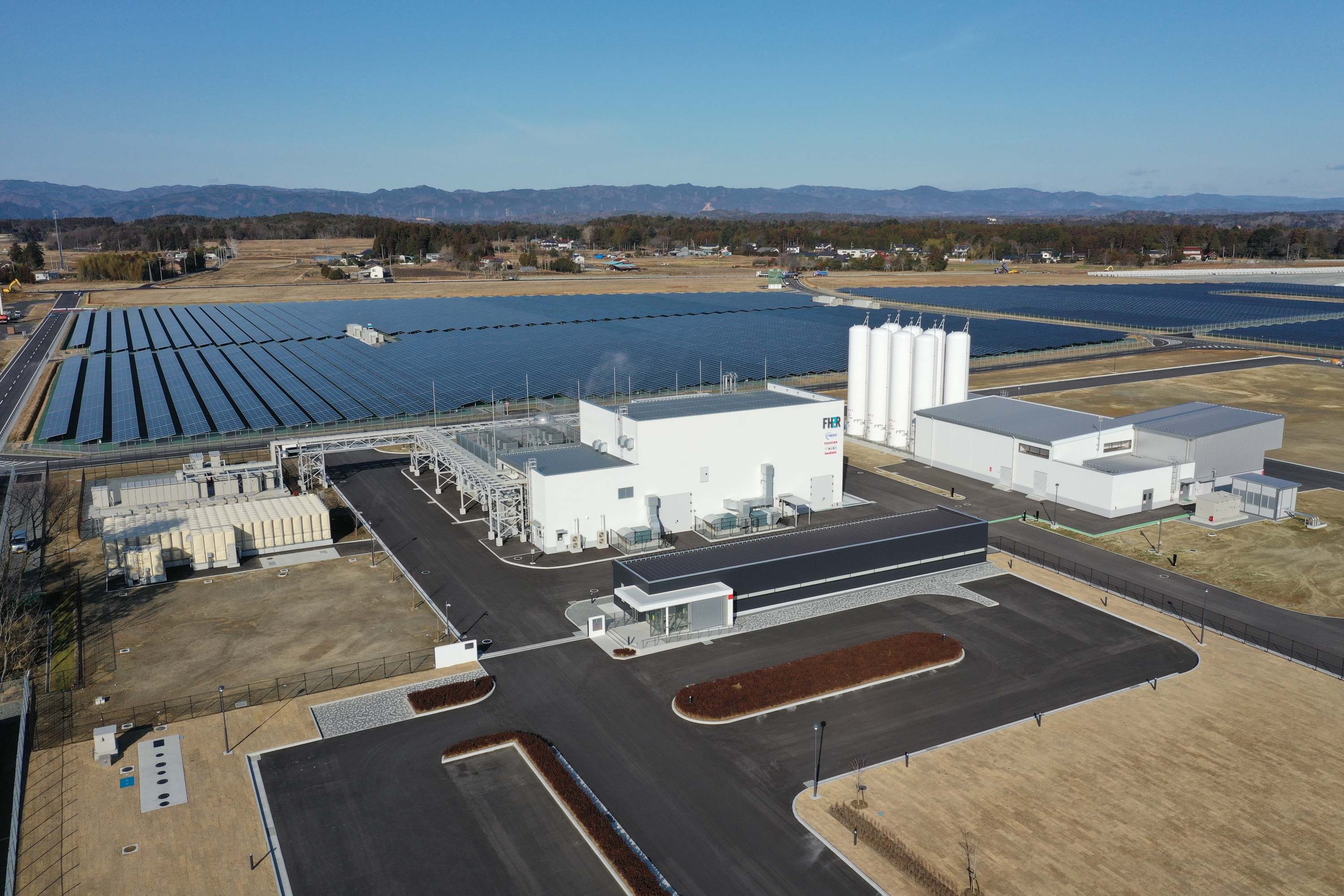
Source: Toshiba Energy Systems & Solutions Corporation
Jules Verne wrote in The Mysterious Island in 1875:
- Water? Pencroff asked. - Will water burn in the furnaces of steamboats, locomotives, will water heat the water?
“Yes, but water decomposed into its constituent parts,” said Cyrus Smith. - Without a doubt, this will be done with the help of electricity, which in the hands of man will become a powerful force, for all the great discoveries - such is the incomprehensible law - follow each other and, as it were, complement each other. Yes, I'm sure the day will come and water will replace fuel; hydrogen and oxygen, of which it consists, will be used separately; they will prove to be an inexhaustible and such a powerful source of heat and light that coal is far from them! The day will come, my friends, and not coal, but cylinders with these two compressed gases will be loaded into the holds of steamers, into the tenders of steam locomotives, and they will burn with tremendous heat output. Therefore, there is nothing to be afraid of. As long as the earth is inhabited by people, it will not deprive them of its goods, neither light, nor heat, it will give plants, minerals and animals at their disposal.In a word, I am sure that when the coal deposits run out, people will turn water into fuel, people will be heated by water. Water is the coal of the ages to come.
- I would like to have a look at all this, - said the sailor.
“You were born early, Pencroff,” interjected Neb, who had not uttered a word until then.

Engineer Cyrus Smith (center picture) is not just describing the hydrogen economy. On the pages of Jules Verne's novel "The Mysterious Island" (1875), he tells how to make fire without a match, determine longitude and latitude, build a pottery oven, make nitroglycerin and hydroxyl, candles, build a hydraulic lift, etc. Source: Rama / Wikimedia Commons
The skeptical sailor from the Robinsonade by Jules Verne, The Mysterious Island, was indeed born too early to be sure of the accuracy of Cyrus Smith's forecast. The goal of turning hydrogen into “coal of future centuries” in most programs of different countries should be achieved by 2030-2050. Does this mean that humanity has already passed, say, two-thirds of the way to a hydrogen economy? Let's try to predict, but first let's figure out the chronology.
It all began in 1776 with the discovery of hydrogen by the Briton Henry Cavendish, who obtained this colorless gas by the reaction of zinc and hydrochloric acid. In 1800, his compatriots William Nicholson and Anthony Carlisle carried out electrolysis for the first time - the reaction of the decomposition of water into hydrogen and oxygen using electricity, which we all know from school.
Thirty years later, Swiss chemist Christian Schönbein and Briton William Grove carried out the opposite process - they received electricity from hydrogen and oxygen, building the first ever hydrogen fuel cells with an acid electrolyte.
Applied research has grown in the 20th century. In the 1920s. The German engineer Rudolf Erren reconstructed the internal combustion engines of trucks, buses and submarines so that they could run on hydrogen and its mixtures. And the British John Haldane was the first to propose using wind energy to produce hydrogen by electrolysis.
The disaster of the Hindenburg airship in 1937, and then the Second World War was interrupted for the duration of research in this area, although hydrogen was actively used, for example, in besieged Leningrad.

When gasoline ran out in Leningrad, mechanic Boris Shelishch managed to convert automobile engines to hydrogen spent by balloons. Source: RIA Novosti archive / Wikimedia Commons
In 1970, US chemist John Bockris introduced the concept of a "hydrogen economy", proposing to power the electric grids of American cities with solar energy, and use hydrogen as its carrier.
All these years, affordable and practical gas has been actively developed in industry. True, they did not think about its ecological potential, therefore, most of the methods of producing hydrogen, which have been inherited from the industrial era, are, although inexpensive, “dirty”. More about them.
5 shades of hydrogen: why and how is it produced?
Since John Bockris proposed turning hydrogen into energy, global demand for this gas has tripled to 70 million tonnes per year. According to various estimates, by the 2040s the indicator will increase to 100-200 million tons per year. According to the estimates of the International Energy Agency (IEA), 33% of this gas is produced for oil refining, 27% for ammonia and mineral fertilizers, 11% for methanol synthesis, and 3% to meet the needs of the steel industry.
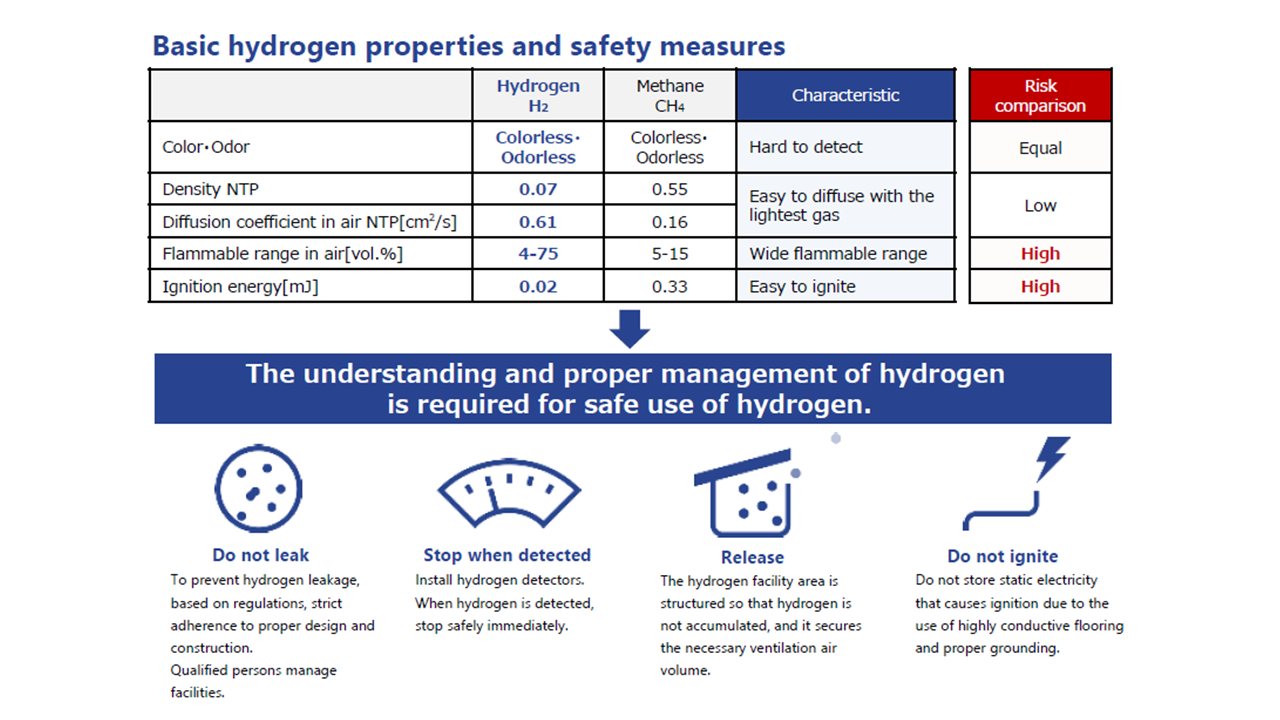
Hydrogen is a colorless, odorless and tasteless, non-toxic gas, but mixed with air or oxygen is flammable and dangerous. Source: Toshiba Clip
Where does hydrogen come from? The lion's share is extracted from natural gas (76%) and coal (23%). Because of this, environmentally friendly H2 turns out to be dirty for the environment - its producers emit as much carbon dioxide into the atmosphere as the UK and Indonesia combined. To unlock the ecological potential of hydrogen, it must be produced differently.
In recent years, a "color" classification of hydrogen has developed according to the type of source for its production:
- gray hydrogen - from natural gas;
- blue hydrogen - from minerals, but using carbon capture and storage technology (CCS), which we talked about here .
- black hydrogen - from coal;
- brown hydrogen - from brown coal;
- green hydrogen - from renewable energy sources (RES).
Now let's see how exactly “multi-colored hydrogens” are produced and how much it costs.
Lighter than air, but more expensive than a dollar: how much do different types of hydrogen cost?
Let's start with fossil sources. Hydrogen is produced from natural gas by reforming - the conversion of CH4 by an endothermic reaction using water vapor. The disadvantage of this technology is CO2 emissions, which, however, can be reduced by up to 90% if CCS technologies are used.
For reference: one cubic meter of hydrogen is equal to 0.08988 kilograms or 1.2699 liters and has about the same energy value as a third of a liter of gasoline. This means that burning 1 kilogram of hydrogen releases the same amount of energy as burning 2.75 kilograms of gasoline.
"Gray" hydrogenso far the cheapest. According to the IEA, the cost of producing one kilogram of hydrogen is $ 0.90–3.20, depending on the region and technology. The lowest price is in the Middle East ($ 0.90 / kg), in the USA ($ 1.00 / kg) and Russia ($ 1.10 / kg) - low prices for natural gas help out. In Europe and China it is more expensive: $ 1.73 / kg $ 1.78 / kg, respectively.
Blue hydrogen generated from natural gas using CO2 capture is more expensive. In the Middle East, it will cost $ 1.45 / kg, in the USA - $ 1.52 / kg, in Russia - $ 1.64 / kg, in Europe - $ 2.32 / kg, in China - 2 , 38 USD / kg.
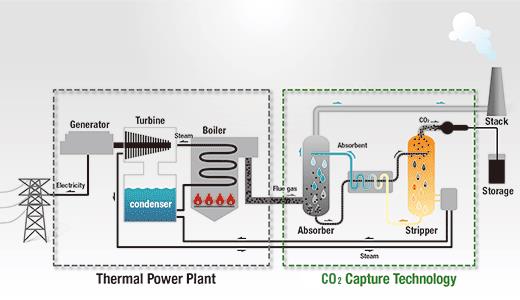
Carbon dioxide capture technologies can be used to reduce the carbon footprint of hydrogen production. The principle of CSS is in the diagram. Source: Toshiba Energy Systems & Solutions Corporation
"Black" hydrogen is produced by gasification - processing of solid or liquid fuel by oxidation. This is done mainly in China, where there is a lot of cheap coal. When producing black hydrogen, CO2 emissions are doubled compared to gray hydrogen. But the Chinese are attracted by the price - one kilogram of "black" hydrogen costs $ 1.10, and with the use of CO2 capture - $ 1.50.
"Brown" hydrogenit can also be produced by gasification, but brown coal is still a rarity, so it is too early to talk about average prices. The Australians want to use it and, according to their calculations, the cost of one kilogram of "brown" hydrogen (including CCS) will be $ 2.14–2.74.
The final price of all these types of hydrogen is mainly determined by the cost of raw materials, and this is the main problem. Gas and coal are exhaustible resources, their prices are volatile, and their carbon footprint is very significant. Therefore, every year the idea of extracting energy from water covering 70% of the Earth's surface is becoming more and more attractive for both environmentalists and economists.
"Green" hydrogen: where to produce it and how much does it cost?
So far, electrolysis produces less than 0.1% of hydrogen, but this particular method involves the use of renewable energy sources.
And you need a lot of energy: according to the IEA, in order to produce the current annual volume of hydrogen (70 million tons) by electrolysis, you need more electricity than the European Union generates in a year (3.60 thousand TWh). Since the technology turns out to be energy intensive, the cost of "green" hydrogen mainly depends on the price of electricity.
Fortunately, they are falling: according to the International Renewable Energy Agency (IRENA), in 2019 the average cost of solar electricity fell by 13% to $ 0.07 / kWh. The energy of the sea and land winds fell by 9%, respectively, to $ 0.05 / kWh and $ 0.12 / kWh. Electricity generated from fossil sources is on average estimated at $ 0.066 / kWh.
When the Earth's water reserves are depleted, the reserves of whiskey, beer, energy drinks and soda will be used for electrolysis. Source: YouTube channel Inventor The
second component of the potential electrolytic miracle (water) is simpler: one kilogram of hydrogen requires nine liters of water. Accordingly, to obtain the annual volume of hydrogen, 617 million cubic meters will be needed. m of water - 1.3% of world H20 consumption by energy. Fresh water is needed, and sea water will have to be demineralized. However, this adds only $ 0.01-0.02 to the price of one kilogram of hydrogen.
How much does “green” hydrogen cost? According to the Hydrogen Council, it now averages $ 6.00 per kg. The IEA gives the following plug: 3.00–7.50 USD / kg. There are factors that strongly influence the cost of green hydrogen. First of all, it is a region.
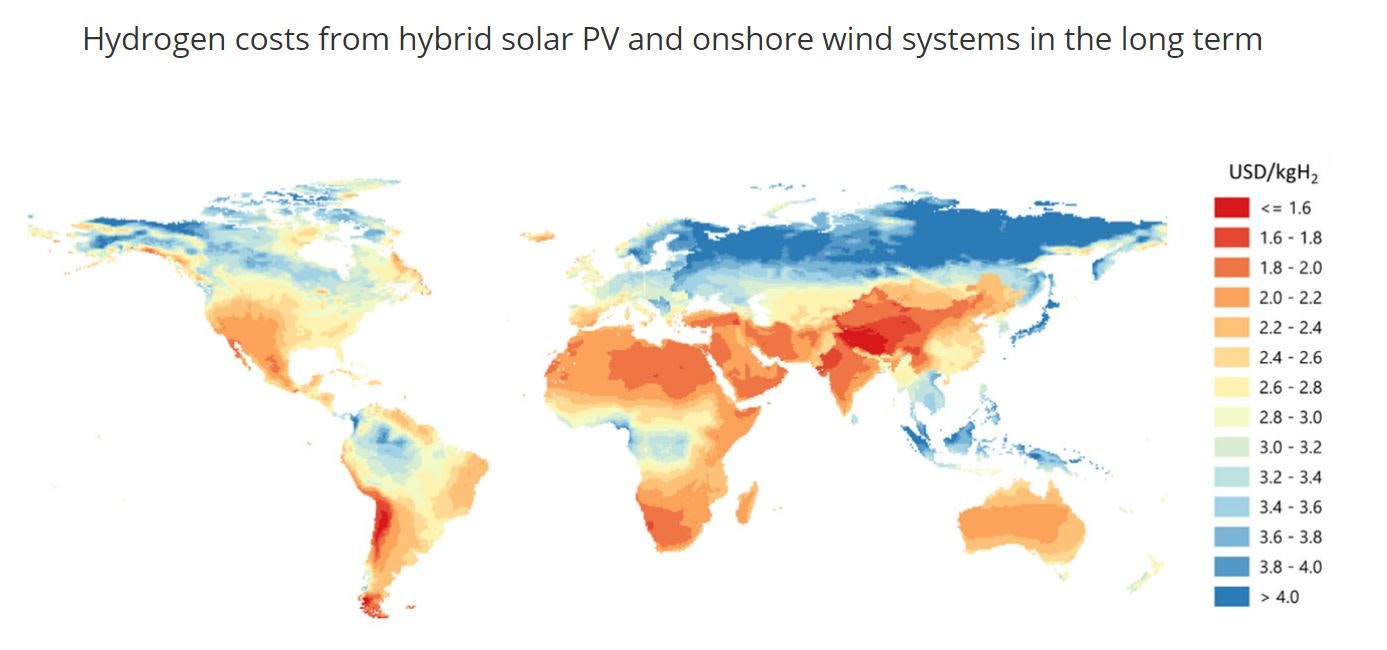
The most promising corners of the planet for renewable hydrogen are Patagonia, North Africa, the Middle East, Mongolia, Australia, China, the United States and New Zealand. Here the cost of "green" hydrogen will be $ 1.60-2.40 / kg. Source: International Energy Agency
The second factor is the scale of production. The larger it is, the lower the final cost of "green hydrogen". And therefore, although Japan is a small country, the authorities of Fukushima Prefecture did not spare the land for the world's largest solar-powered hydrogen plant from Toshiba ...
Really peaceful atom: why was the largest hydrogen plant in the world built in Fukushima?
According to the calculations of the Hydrogen Council, for one kilogram of "green" hydrogen to cost $ 1.00-2.00, by 2030, its production must be increased to 12 million tons per year. The larger the scale of production, the lower its unit costs.
To understand how large hydrogen production can be integrated into the existing power grid, Toshiba has built the world's largest hydrogen-by-electrolysis pilot plant, which powers a solar power plant (SPP). It is called Fukushima Hydrogen Energy Research Field, FH2R. The plant is located in the village of Namie (Fukushima Prefecture) and covers an area of 220 thousand square meters. m. It consists of a solar power plant with a capacity of 20 MW and an electrolyzer with an input capacity of 10 MW.
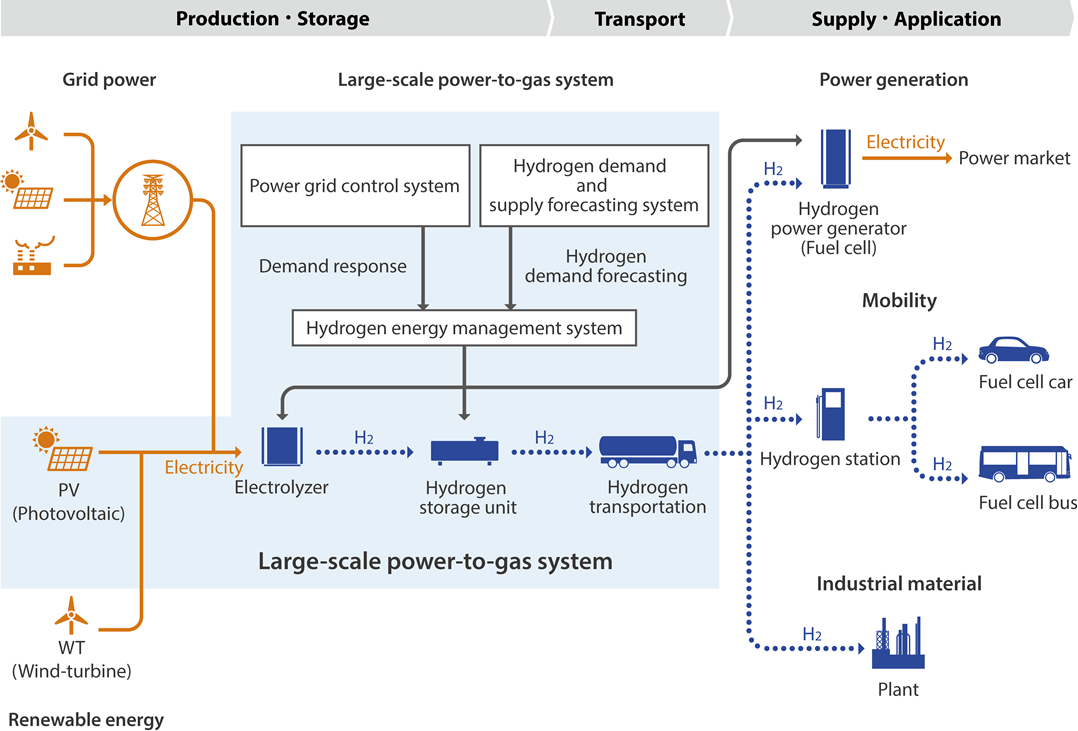
In addition to the SPP, the plant is powered by an ordinary power grid. Renewable energy sources can provide energy in abundance, and excess hydrogen can be stored to maintain electrolysis during periods of minimal solar or wind activity. But in a less sunny country like Japan, Toshiba decided to use the power grid to find an economic balance between alternative traditional power sources. Source: International Energy Agency
The FH2R pilot plant will produce up to 900 tons of hydrogen per year to power cars and buses on fuel cells, as well as for its own needs. The production will reach 1.20 thousand cubic meters. m per hour, that is, the plant's production per day will be enough to refuel 560 hydrogen cars and energy for 150 houses.
By the way, about transport. The road to a hydrogen economy is likely through the tanks of personal cars, buses and trucks, where hydrogen will replace gasoline. How and when will this happen?
Elon Musk's nightmare: will the Tesla hydrogen cars win?
Fuel cell cars are the minimum program of the hydrogen revolution. Such transport is the focus of the programs of most host countries.
Hydrogen contains more energy per unit mass than natural gas or gasoline, making it an attractive transportation fuel. Among the advantages are fast refueling (as opposed to electric cars), a greater range (about 400 km with an average of 250 km for electric vehicles), low weight of raw materials, no CO2 emissions, more environmentally friendly and simple disposal of fuel cells in comparison with batteries of electric cars.
Now more than 25 thousand cars run on hydrogen around the world - twice as many as in 2018. This is mainly the Toyota Mirai (which we once wrote about here, on Habré), Hyundai Nexo and Honda Clarity Fuel Cell, although buses and trucks dominate in China. But there are far fewer hydrogen cars than their direct competitors, battery-powered electric cars, which number close to 7.2 million. Why?
First, hydrogen cars are more expensive. For example, Toyota Mirai costs 58.5 thousand US dollars, and Tesla Model 3 - 35 thousand US dollars. Two main components of a hydrogen car are expensive - fuel cells and a tank. However, this problem will be solved in the future by increasing the scale of production. If now the cost of a fuel cell for a hydrogen machine is $ 230-180 / kWh, then with an increase in their output from 1,000 to 500,000 units per year, it will decrease to $ 45 / kWh. At the same scale up, the price of a hydrogen tank will decrease from $ 23 / kWh to $ 14-18 / kWh.
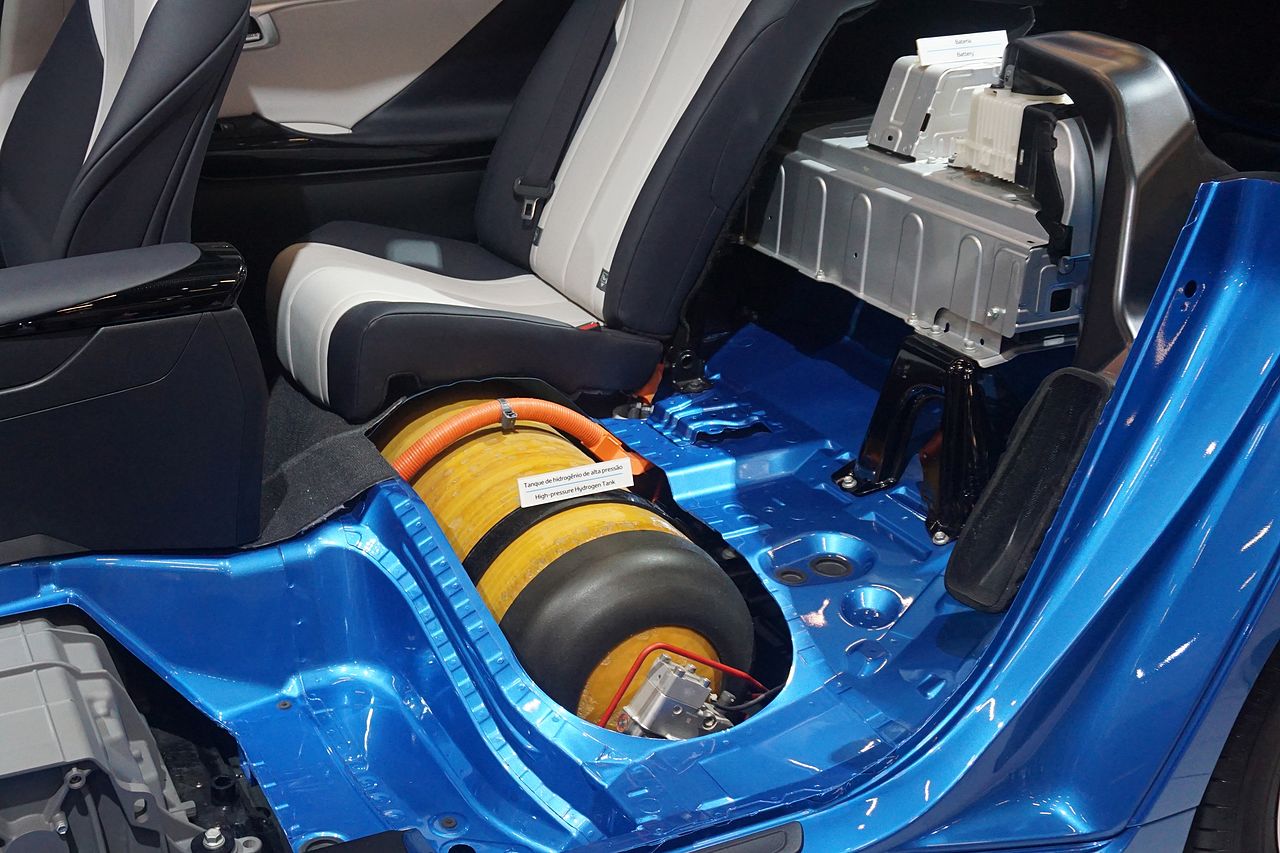
The Toyota Mirai has two hydrogen tanks with a total weight of almost 88 kg. Hydrogen is stored in them under a pressure of 70 MPa. Source: Mariordo / Wikimedia Commons
Secondly, there is a problem with refueling: there are few of them - 25 thousand hydrogen vehicles refuel at 470 stations, most of which are located in Japan (113), Germany (81) and the USA (64). However, over time, the problem will be solved by the development of a network of gas stations.
Now about fuel costs. For example, in Germany, 1 kg of hydrogen at public gas stations costs 9.50 euros. A fuel cell vehicle uses approximately one kilogram of hydrogen per 100 kilometers. Thus, fuel costs are comparable to the average gasoline car, which consumes 7 liters per 100 km.
In total, the capital and operating costs for a hydrogen car are estimated by IEA experts at about $ 0.65 / km, while for electric vehicles it is about $ 0.58 / km, but in the future they will become equal. The Hydrogen Energy Council predicts that personal cars will become competitive by 2030 with the price of hydrogen dropping to $ 2.00 / kg. What about other uses for hydrogen?
Summary: when will the era of hydrogen begin (and will it begin at all)?
Experts from the Council for Hydrogen Energy have calculated at what price per kilogram hydrogen will become a competitive alternative to other energy sources with a low carbon footprint.
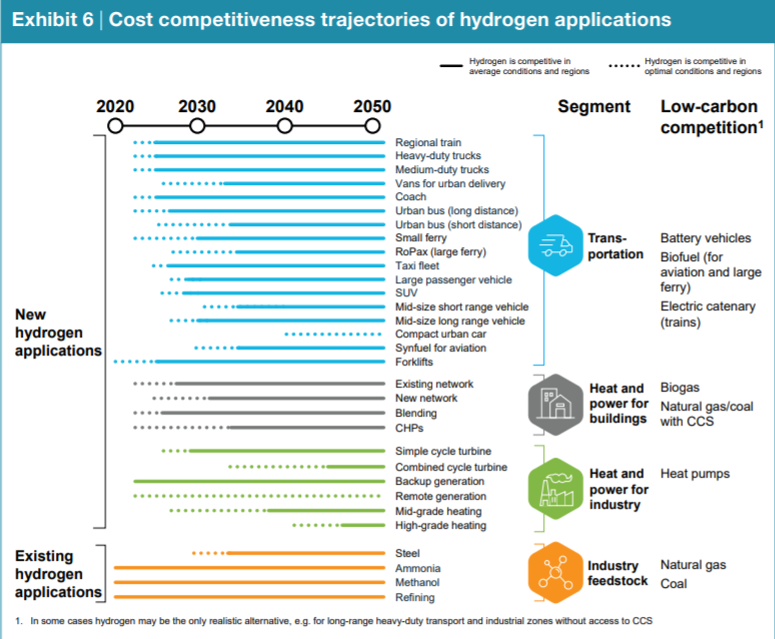
Hydrogen is already indispensable as a raw material in industry, and in the future its prospects are associated with transport and supply of heat and electricity for civil and industrial consumers. Source: Path to Hydrogen Competitiveness. A Cost Perspective // 20 January 2020, Hydrogen Council
When the price of a kilogram of hydrogen drops to $ 4.00-5.00, trucks and buses running on long routes will become competitive. Moreover, this can happen in 5 years. The situation with private cars and vans is different: even if the price of hydrogen decreases, their cost may remain high relative to electric cars. Then hydrogen cars will be bought only by motorists with quick refueling priorities and those who use cars very intensively, for example, taxi drivers. To turn small cars into Tesla rivals, the price of hydrogen needs to be reduced to $ 1.00-1.50 / kg.
But electric trains on fuel cells can already compete with the usual ones on routes up to 50 km with a high frequency of flights. For them to remain attractive, the share of fuel costs must fall from the current 40-50% to 20-30%, which can happen at a price of $ 4.5 / kg of hydrogen by 2030.
Very soon (by about 2023), forklifts, which are already actively used in China, can conquer the world at a price of 1 kg of hydrogen at $ 7.00-9.00.
Hydrogen can be piped into residential buildings. In this case, he will be able to replace natural gas for electricity and heating houses using carbon dioxide capture technology. When the price drops to $ 3.00-5.40 / kg, hydrogen becomes more profitable than other heating systems, say, on biomethane. But hydrogen can handle natural gas without CCS only if it costs less than $ 1.00 / kg. As a source of electricity, hydrogen fuel cells will become competitive at a price of $ 1.90 / kg.
so
As you can see, a fully hydrogen economy will still not exist by the middle of this century. According to the forecast of the International Hydrogen Council, at a price of $ 1.8 / kg, hydrogen will be able to cover up to 15% of the global energy demand by 2030, and by 2050 - 18%. Apparently, we, like Julesvern's sailor Pencroff, were born too early to see hydrogen become the "coal of the age." Most likely, this gas will play an important role in multifactor energy and will indeed replace fossil resources in some regions and applications, but it will have to compete with other sources and carriers of energy for a long time to come.